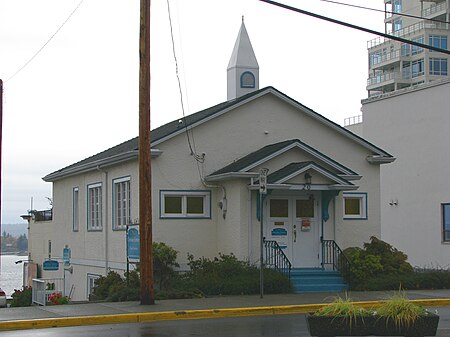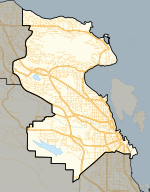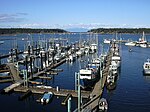Christian Science Society (Nanaimo)

Christian Science Society, also called the Christian Science Society Building, is an historic single storey style Christian Science church edifice located at 20 Chapel Street in Nanaimo, British Columbia, Canada. It was built between 1900 and 1910 as a single-family house and was known as the McDonald Property. In 1932 it was converted to church use by being placed on a concrete foundation and having its exterior stuccoed while the interior was gutted and remodeled for its new use. Citing the building as a "good example of early adaptive re-use" and '"very good example of Classical Period Revival architecture", albeit "a very modest rendition of the style", the city designated it a local heritage site on October 7, 2002.Christian Science Society is still an active congregation listed in the Christian Science Journal.
Excerpt from the Wikipedia article Christian Science Society (Nanaimo) (License: CC BY-SA 3.0, Authors, Images).Christian Science Society (Nanaimo)
Chapel Street, Nanaimo
Geographical coordinates (GPS) Address Nearby Places Show on map
Geographical coordinates (GPS)
| Latitude | Longitude |
|---|---|
| N 49.169191666667 ° | E -123.93838333333 ° |
Address
Chapel Street
V9R 5H4 Nanaimo
British Columbia, Canada
Open on Google Maps







